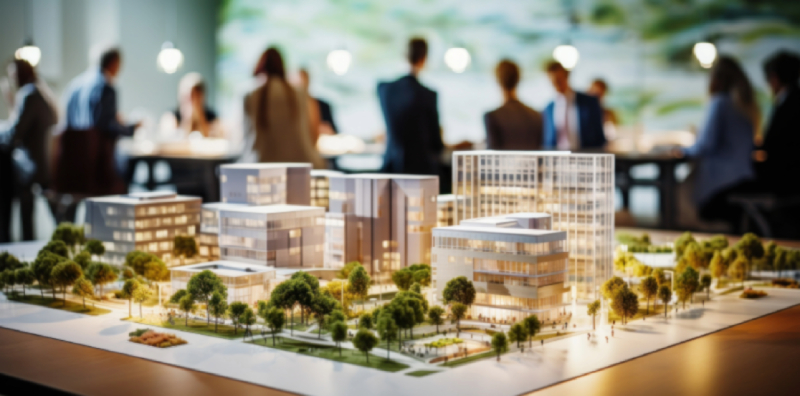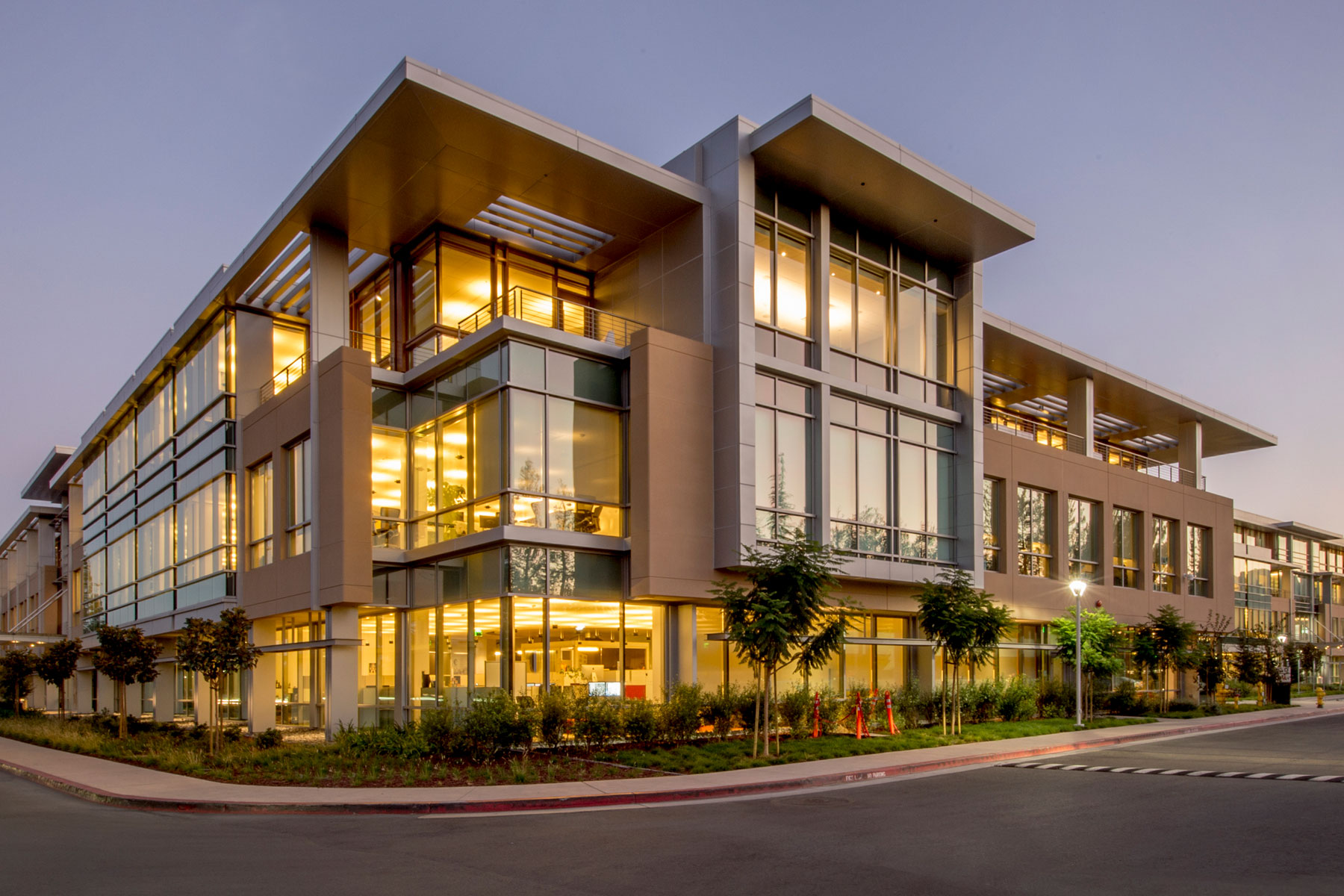How Commercial Architects Can Transform Your Organization Room With Expert Style Solutions
Commercial architects play a vital role in improving company environments. Their expertise in style can significantly enhance both performance and aesthetics. By creating spaces that show a brand name's identity, they boost functional performance and staff member complete satisfaction. Nevertheless, the impact of their job expands beyond mere look. Recognizing the nuances of partnership and sustainability can bring about transformative results. What specific elements make these changes effective?
Comprehending the Duty of Commercial Architects
Commercial architects play a vital duty fit organization atmospheres that are both functional and cosmetically pleasing. They specialize in creating areas customized to the certain requirements of services, making certain that every square foot is used effectively. These professionals incorporate elements such as spatial format, lights, and materials to boost efficiency and worker health. By collaborating with clients, commercial architects collect insights right into functional needs and brand name identification, converting these into cutting-edge designs.Additionally, they navigate complicated building codes and zoning laws, making sure conformity while maximizing layout capacity. Their know-how reaches sustainability methods, promoting energy efficiency and environmentally pleasant products in their jobs. With their innovative vision and technical knowledge, business architects not just create enticing areas yet also foster environments that advertise cooperation and growth. Ultimately, their contributions greatly impact the general success and picture of a business.
Advantages of Professional Design Services

Tailoring Spaces to Your Brand Identity
Customizing spaces to a brand's identity is important for conveying its core worths and goal. Commercial architects play a crucial duty in enhancing a service's aesthetic identity via thoughtful design selections. By lining up architectural elements with brand name concepts, companies can develop environments that reverberate with customers and employees alike.
Showing Brand Worths
How can a well-designed space symbolize a firm's core worths? Commercial architects play a crucial duty in shaping environments that reverberate with a brand name's identity. By incorporating components such as color design, materials, and designs, they produce spaces that reflect the essence of the company. A tech firm might choose for open designs and modern-day home furnishings to communicate advancement and cooperation, while a luxury brand name might pick classy coatings and intimate spaces to stimulate exclusivity and class. Thoughtful design not just improves functionality however also cultivates a strong link in between employees, clients, and the brand. Inevitably, a well-crafted environment works as a substantial depiction of a firm's objective and vision, reinforcing its worths at every touchpoint.
Enhancing Aesthetic Identity
What components can properly elevate a brand's visual identity within a commercial room? Commercial architects play a critical duty in integrating style attributes that resonate with a firm's ethos. Color pattern, typography, and products can be strategically selected to show brand name values while making sure visual appeal. Furthermore, incorporating logo designs and brand name images into the design can create a cohesive aesthetic story. Lights design can better boost the atmosphere, assisting customer assumptions and experiences (commercial architects). Layout and furniture selections ought to line up with the brand name's individuality, whether it's contemporary, conventional, or innovative. Ultimately, a well-designed commercial space not just attracts consumers however also reinforces brand acknowledgment, developing a long lasting impression that cultivates loyalty and engagement
Enhancing Performance and Effectiveness
Enhancing functionality and performance in industrial areas includes enhancing room use and developing process that improve operations. Architects concentrate on developing formats that lessen thrown away space while helping with smooth modifications between jobs. This strategy not just improves productivity however also adds to an extra natural working atmosphere.
Maximizing Room Usage
Reliable room utilization is a critical consider commercial style, where the style has to stabilize aesthetic appeals with capability (commercial architects). Architects utilize different methods to maximize readily available square footage while making sure that each area serves an unique function. By evaluating operations, traffic patterns, and customer needs, architects can create layouts that improve both staff member productivity and customer experience. Multi-functional areas, versatile furniture plans, and maximized storage solutions are important parts in achieving this goal. Additionally, integrating all-natural light and open areas promotes a more inviting ambience, further raising the energy of navigate here the setting. Inevitably, effective room application not only enhances functional performance but additionally adds favorably to the total brand photo, making it an important factor to consider in industrial design
Streamlined Operations Layout
Exactly how can a well-designed operations change a commercial room into a center of productivity? Structured operations design concentrates on maximizing the physical format and functional procedures within an organization atmosphere. By strategically organizing workstations, meeting areas, and special info sources, architects can eliminate unneeded movement and enhance partnership. This thoughtful design reduces interruptions and promotes communication, enabling employees to concentrate on their tasks more efficiently. Additionally, integrating modern technology right into the workflow can better automate procedures, lowering time invested on regular jobs. Therefore, companies experience enhanced worker spirits and increased outcome, creating a dynamic environment that fosters advancement. Ultimately, purchasing structured operations design not just boosts functionality yet also places an industrial space for sustainable growth and success.
Promoting Collaboration Through Design
Although modern-day work spaces typically focus on private productivity, the layout of industrial spaces progressively stresses cooperation as an essential driver of development and team cohesion. Architects play an important function in developing atmospheres that foster interaction among workers. Open up formats, multifunctional spaces, and purposefully placed communal areas urge spontaneous conversations and conceptualizing sessions.Incorporating elements such as movable furniture and adaptable meeting areas allows groups to reconfigure areas based upon their joint demands. In addition, integrating modern technology, like interactive whiteboards and video conferencing tools, boosts the ability to connect efficiently, despite location.Natural light and biophilic design aspects also add to a much more welcoming ambience, promoting comfort and wellness, which are important for effective teamwork. By focusing on these aspects, business architects can develop dynamic settings that not just improve cooperation but likewise drive total organization success.
Lasting Design Practices in Commercial Architecture

Situation Studies: Effective Makeovers by Commercial Architects
The application of lasting style techniques has not only improved the strategy to industrial style however has additionally brought about exceptional makeovers in various company areas. One notable situation is the redesign of a technology firm's headquarters, where architects incorporated all-natural light and green walls, resulting in enhanced staff member wellness and performance. This transformation decreased power expenses by 30% and enhanced the business's public image.In another instance, a store underwent a complete overhaul, making use of recovered materials and energy-efficient systems. This not only attracted eco-conscious customers but also enhanced foot web traffic by 25%. A 3rd situation involved a business workplace that welcomed an open-plan format with flexible offices, fostering partnership among teams. The architects' focus on creating a lively and adaptable atmosphere substantially improved staff member satisfaction. These instance studies exemplify how business architects can create impactful areas that straighten with business goals and sustainability efforts.
Regularly Asked Concerns
How Much Do Commercial Design Services Usually Expense?
The expense of commercial style solutions varies widely, usually ranging from $100 to $250 per hour. Aspects affecting pricing consist of project complexity, location, and the architect's experience, making it vital for companies to acquire detailed estimates.
What Kinds Of Services Profit The Majority Of From Commercial Architects?
Different services, consisting of retail, friendliness, and corporate workplaces, greatly take advantage of commercial architects. These experts enhance functionality, appearances, and brand name identification, making certain rooms are enhanced for customer involvement and staff member efficiency, ultimately cultivating business growth.
For how long Does a Business Design Project Generally Take?
The timeline for an industrial design task usually varies from a number of weeks to several months. Factors affecting duration consist of task complexity, governing approvals, and collaboration amongst stakeholders, every one of which can impact total completion time.
Can I Hire a Commercial Engineer for Improvements Just?
Yes, employing a business engineer for restorations is feasible. Many architects specialize in restoration tasks, providing proficiency in enhancing existing areas while adhering to laws and boosting capability, aesthetics, and total worth of business setting.
What Credentials Should I Seek in an Industrial Engineer?
